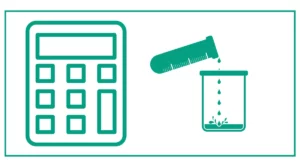Boyle’s Law Calculator
Pa
m³
m³
Pa
m³
m³
Pa
m³
Pa
This Boyle’s law calculator helps you calculate the initial pressure, final pressure, initial volume, and final volume.
Simply enter any three values to find the fourth one.
For example, if you want to calculate the final volume (V2), enter the P1, V1, and P2.
In 1662, Robert A. Boyle proved that gas volume is inversely proportional to pressure at a constant temperature. Hence, it describes a gas at a constant temperature.
In other words, it describes the compression and expansion of a gas at a constant temperature.
Boyle’s law is also known as Boyle–Mariotte law and Mariotte’s law.

What is Boyle’s Law?
Boyle’s Law, also known as the Boyle-Mariotte law, is one of the fundamental gas laws in physics and chemistry. This law explains the relationship between the pressure and volume of a gas at constant temperature.
Boyle’s Law states that for a fixed amount of an ideal gas kept at a constant temperature, the pressure and volume are inversely proportional. In other words, as the pressure increases, the volume decreases, and vice versa, as long as the temperature and mass of the gas remain constant.
The law can be expressed mathematically as:
P1V1 = P2V2
Where:
- P1 is the initial pressure
- V1 is the initial volume
- P2 is the final pressure
- V2 is the final volume
This equation forms the basis of our gas law calculator.
How to Use the Gas Law Calculator
The gas law calculator provided is a versatile tool that allows users to calculate any one of the four parameters in Boyle’s Law equation, given the other three. Let’s break down each calculator and how to use them:
Initial Pressure Calculator (P1)
This calculator helps you find the initial pressure when you know the final pressure, initial volume, and final volume.
To use:
- Enter the final pressure (P2) in Pascals (Pa)
- Enter the initial volume (V1) in cubic meters (m³)
- Enter the final volume (V2) in cubic meters (m³)
- Click “Calculate P1”
- The result will display the initial pressure in Pascals
Final Pressure Calculator (P2)
Use this calculator to determine the final pressure when you have the initial pressure, initial volume, and final volume.
Steps:
- Input the initial pressure (P1) in Pascals
- Enter the initial volume (V1) in cubic meters
- Input the final volume (V2) in cubic meters
- Click “Calculate P2”
- The calculator will show the final pressure in Pascals
Initial Volume Calculator (V1)
This tool calculates the initial volume when you know the initial pressure, final pressure, and final volume.
How to use:
- Enter the initial pressure (P1) in Pascals
- Input the final pressure (P2) in Pascals
- Enter the final volume (V2) in cubic meters
- Click “Calculate V1”
- The result will display the initial volume in cubic meters
Final Volume Calculator (V2)
Use this calculator to find the final volume when you have the initial pressure, initial volume, and final pressure.
Steps:
- Input the initial pressure (P1) in Pascals
- Enter the initial volume (V1) in cubic meters
- Input the final pressure (P2) in Pascals
- Click “Calculate V2”
- The calculator will show the final volume in cubic meters
Practical Applications of the Gas Law Calculator
Understanding how to use the gas law calculator is one thing, but knowing when and where to apply it is equally important. Here are some real-world scenarios where this tool can be particularly useful:
1. Scuba Diving
Scuba divers rely heavily on understanding gas laws to ensure their safety underwater. As divers descend, the pressure increases, which affects the volume of air in their lungs and equipment. Using the gas law calculator, divers can predict how the volume of air in their tanks will change at different depths, helping them plan their dives more accurately.
Example: A diver has a tank with 10 liters of air at the surface (1 atm pressure). Using the Final Volume Calculator, we can determine the volume of this air at 20 meters deep (about 3 atm pressure):
- P1 = 101325 Pa (1 atm)
- V1 = 0.01 m³ (10 liters)
- P2 = 303975 Pa (3 atm)
The calculator would show that V2 ≈ 0.00333 m³ or 3.33 liters, demonstrating how the air volume decreases with depth.
2. Meteorology
Meteorologists use gas laws to understand and predict weather patterns. The behavior of gases in the atmosphere, particularly how pressure and volume change with altitude, is crucial for weather forecasting.
Example: A weather balloon is released with 2 m³ of helium at ground level (1 atm). As it rises to an altitude where the pressure is 0.5 atm, we can use the Final Volume Calculator to determine its new volume:
- P1 = 101325 Pa (1 atm)
- V1 = 2 m³
- P2 = 50662.5 Pa (0.5 atm)
The calculator would show that V2 ≈ 4 m³, illustrating how the balloon expands as it rises due to decreased atmospheric pressure.
Understanding the Limitations of the Gas Law Calculator
While the gas law calculator is a powerful tool, it’s important to understand its limitations:
- Ideal Gas Assumption: The calculator assumes we’re dealing with an ideal gas, which is a theoretical concept. Real gases may deviate from this behavior, especially under extreme conditions.
- Constant Temperature: Boyle’s Law assumes the temperature remains constant. In many real-world scenarios, temperature changes can affect gas behavior.
- No Chemical Reactions: The calculator doesn’t account for any chemical reactions that might occur, which could change the amount of gas present.
- Limited to Pressure-Volume Relationships: This specific calculator only deals with pressure and volume changes. For more complex gas behavior involving temperature changes, you’d need to use additional gas laws like Charles’ Law or the Combined Gas Law.

References
- Watson, K. L., & Watson, K. L. (1998). Gases. Foundation Science for Engineers, 174-183.
- Laugier, A., & Garai, J. (2007). Derivation of the ideal gas law. Journal of Chemical Education, 84(11), 1832.





